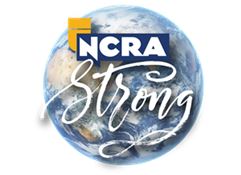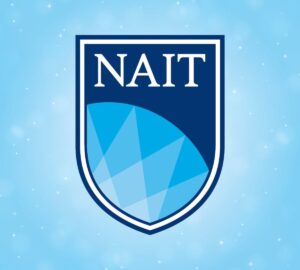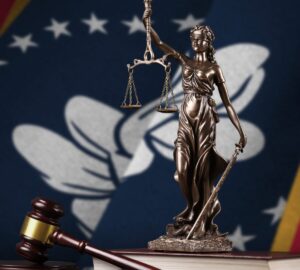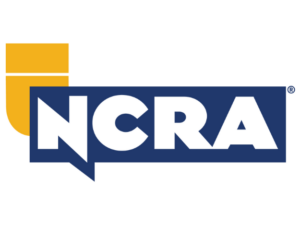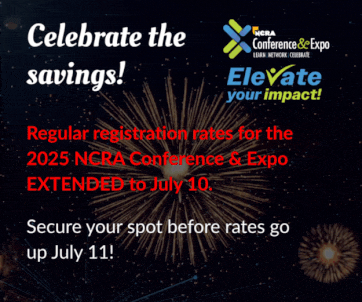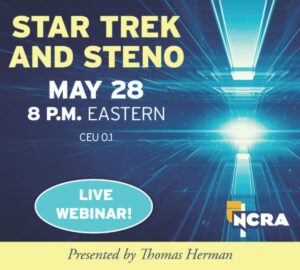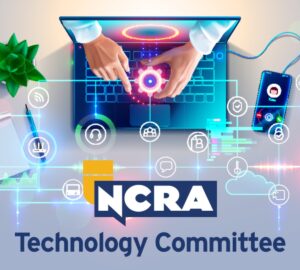By Sue Terry
“However beautiful the strategy, you should occasionally look at the results.” – Winston Churchill
That’s exactly what NCRA STRONG has been doing: Looking at the results and analyzing the offerings in the marketplace and the anticipated results a consumer can expect from the various modalities of making the record.
I recently attended the National Center for State Courts Court Technology Conference on behalf of NCRA and the STRONG Committee, quickly followed by attendance at the Ohio Court Technology Show for the Ohio Court Reporters Association. There’s no better way to know what technology is being offered to our consumers than to see and hear about it firsthand. This affords us the opportunity to educate ourselves and our customers on the questions they should be asking about the products they are being offered. While at these technology-focused events, I asked a few probing questions during the presentations put forth by vendors.
The new product offerings I observed were mostly centered around the automatic speech recognition (ASR) built into an all-inclusive system for courts that would provide e-filing, electronic payments, docketing, etc. Make no mistake: The vendors I saw were pushing the ASR component of their offerings as a great invention for courts that would solve delays in transcripts with a “pool of transcribers.”
Things that make you go “Hmm!”
When I returned home, I wondered if there was a way to see how the electronic video/audio systems were working out for our courts. I began an exercise in executing test searches on the Ohio Supreme Court website. I applaud my state for making it very easy to find the information you’re looking for because I found that not all states had the same capability. Ohio’s site was remarkably easy to navigate, and STRONG is already in the process of compiling a clickable document that will soon be ready for distribution to help you easily navigate to the state court sites that do allow this capability.
If you have some free time, you can go to the Ohio Supreme Court website to do some research. When you scroll all the way down to the bottom of the landing page, in tiny print you will see “Search.” Click on that. Now enter the word “inaudible” into the search box. The day I did my first search, it returned 143,000 cases with “inaudible” in it, and it appeared multiple times in many of the pages. Now repeat the search with “indiscernible,” and you see the results from a single court. I also did a search on the names of a few of the known large transcription companies, and that was also very telling.
Clicking on the cases and doing even some light reading, you quickly realize that these “inaudible” and “indiscernible” transcripts have become a huge problem for litigants. We don’t often hear about them because we don’t know about them. Again, engaging in this search will lead you to a treasure trove of information for you to show your courts or attorneys, particularly if you have a vendor selling one of these systems heading to your courthouse. Be prepared! Don’t be silent. It takes all of us working together and getting involved.
Questions you should ask
What should you do if you are presented with the opportunity to discuss an electronic recording or ASR offering with someone thinking of using digital firms for depositions or selling digital equipment to courts, particularly if it includes an automatic speech recognition component? First, navigate to the search page I described above and show them the results. It can also be easily determined whether a particular court is electronic or stenographic through a phone call to the courthouse.
Here are some additional questions you could ask:
- Do the transcriptionists sign nondisclosure agreements? If transcriptions are performed by a “pool of transcribers,” who will ensure that those transcribers each have signed nondisclosure agreements in place?
- What is their location? Transcriptionists located out of the United States could present legal challenges if they are not subject to subpoena powers.
- What security is in place? Who will ensure they have adequate virus protections that would prevent a hacker from introducing changes/alterations to audio files as they are introduced to the transcriber’s system, or altering the resulting text transcription as it is uploaded as a finished file to a server? Are they strictly following the privacy rules and regulations, particularly as they relate to biometric information released to third parties?
- Which automatic speech recognition engine will be utilized? There are many university-level studies indicating that there are vast differences in the output of various ASR engines. They are each dependent upon the input with which it was trained. What one ASR engine transcribes is not necessarily what another ASR engine transcribes.
- What about wrong words? It’s well documented that malicious code can be introduced to an ASR engine that will cause the ASR to output wrong words. Who will know that has occurred since it is nearly imperceptible to the human ear? How can that record be certified?
- Do different transcription services use different ASR engines? We know there are differences in accuracy performance of various ASR engines, and you can ask how that is factored into a legitimate certification.
- Since cost is a consideration for courts/agencies/caption companies using digital/ASR, are the least-cost alternative engines being used to save dollars? Are they also the least accurate?
You can find answers to most of the questions above by accessing and reviewing the NCRA STRONG Committee’s materials. STRONG has culled through thousands of hours of independent research. We have been working with experts in the forensic digital audio authentication industry, collaborating with one another and others on the best strategies to get our messages out. NCRA staff has been instrumental in helping us gather the contact information for every state bar association in America to enable us to send our materials to them, and we will be working on the same for courts and key captioning decision-makers. We have produced and shared many PowerPoints to assist our states and individuals with presenting to their external audiences. We have produced panel interviews of judges and court administrators who give great insight on why they prefer a stenographer over other methods of making the record, and we are in the process of sharing those on the Steno STRONG Facebook page and the NCRA YouTube channel for your information and use.
The challenges our field has faced recently can best be overcome by using our shared voices, each of us, to educate the public daily on the results that we know these hyped “new” technologies are producing. We are STRONG together.
Sue Terry, FAPR, RPR, CRR, CRC, from Springfield, Ohio, is a freelance court reporter and captioner. She is a past president of NCRA and a member of the STRONG Committee. She can be reached at sueterryemail@aol.com
